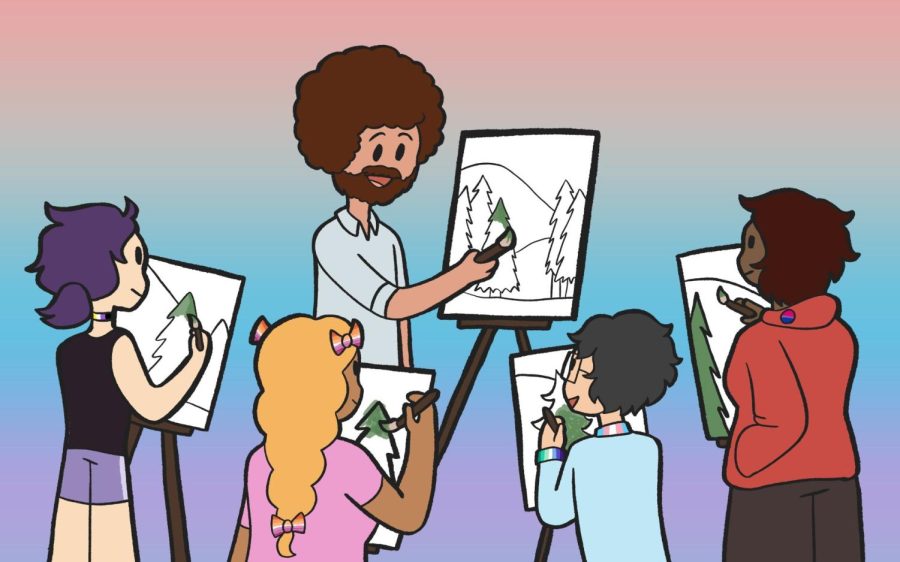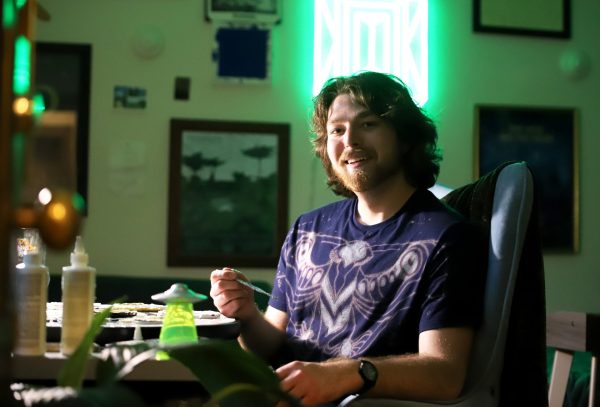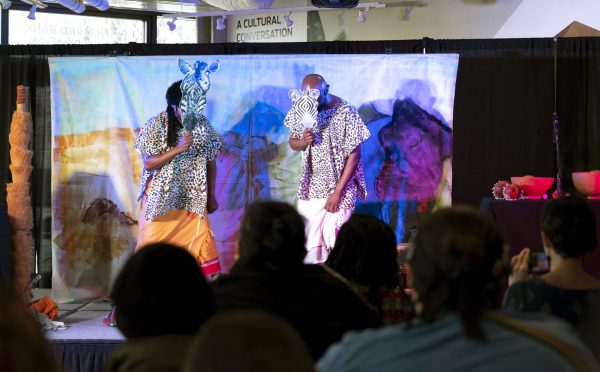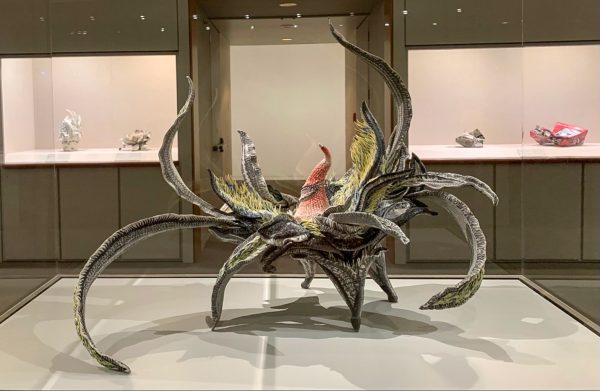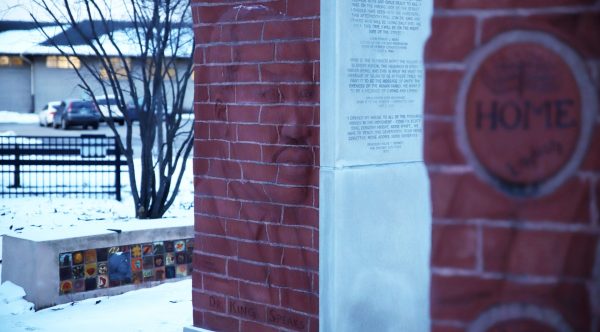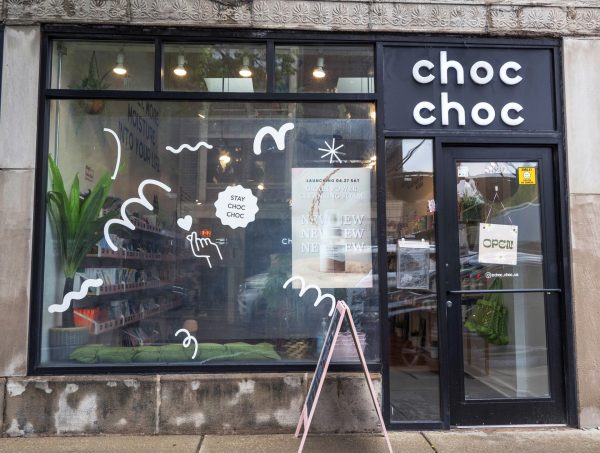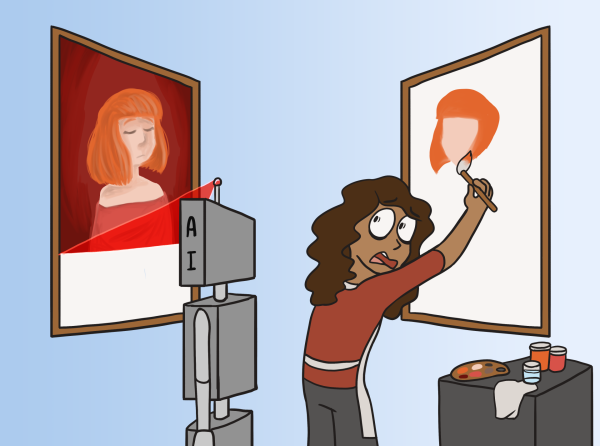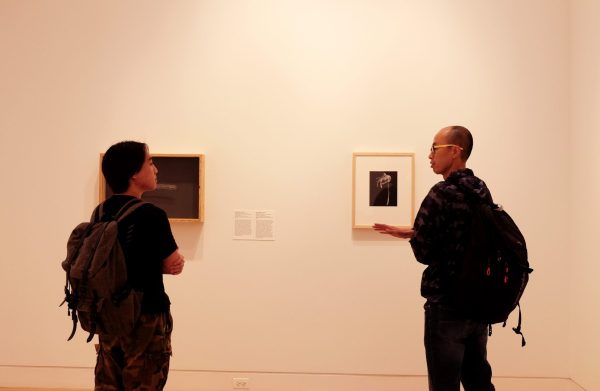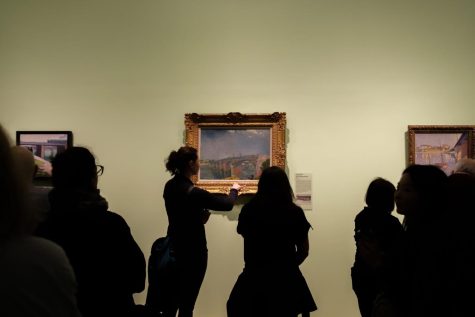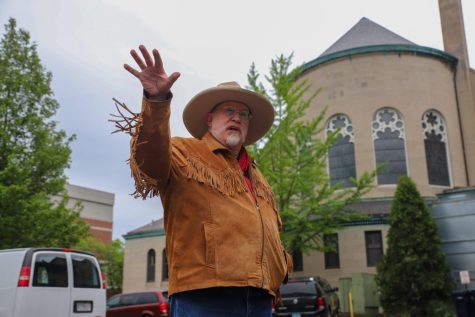‘Creativity and queerness definitely go hand in hand:’ Spectrum DePaul bring together art, history, activism
Laughter erupts from students and brushes splash watercolors while students energetically copy the movements of the Bob Ross video in front of them. The 15 attendees only devote some attention to the projected episode of “The Joy of Painting” as they share smiles and small talk over the half-completed watercolor masterpieces adorning the tables. While the room may look and sound chaotic, this was no happy accident.
Spectrum DePaul, a queer student organization on campus, sets a playful and social atmosphere for all of their events. This holds true for their Bob Ross Paint-Along on April 19, where the paint, paper and good times were all provided.
“I’m always happiest in Spectrum meetings when I look at the room and everyone is sort of talking, even if they didn’t know each other at the beginning of the meeting,” said Leena Jere, president of Spectrum and sophomore. “Seeing people laugh with each other, that’s the tone I want to cultivate.”
Spectrum is currently the largest and oldest active LGBTQ+ student organization on campus. They have roughly 250 members and have operated at DePaul since 2001.
Their Bob Ross Paint-Along nights each quarter started during the pandemic as a way to maintain community online through a creative outlet.
“In a queer context specifically, creativity and art has always been a really important part of queer expression and meetings,” Jere said. “There’s so much history of zine making, painting, printmaking and of all these things that have turned themselves into a queer tradition.”
Nat Van Hoorn, vice president of Spectrum and senior, joined the organization to make friends in a relaxing and safe space. They said their experience as an animation major makes the Bob Ross nights more meaningful because there is no pressure to produce something perfect in a class setting.
“Here, I can just sit down and paint with Bob Ross using Crayola watercolors,” Van Hoorn said. “There’s something very therapeutic about it that puts a smile on my face.”
Ren MacMorran, freshman and secretary of Spectrum, said besides using Bob Ross for a relaxing atmosphere to paint in, the creativity also gives queer students a chance to explore their identity.
“It’s important that we try to get people involved in the arts if they wish to,” MacMorran said. “That’s a lot of what queer culture has been with fashion, makeup, literature and all those expressive mediums. What better medium is there than art? Even if we’re copying someone else’s right now.”
While art is now being used to bring together DePaul’s LGBTQ+ at Spectrum, activism used to be the connecting factor for members of the organization.
“At the time of its conception, it was very much the main and only place on campus to meet queer people and talk about being queer,” Jere said. “Nowadays, people really just want to escape all the discourse they get on their social media feeds, so Spectrum doesn’t have quite as much of that activism role.”
Jere and Van Hoorn began researching Spectrum’s history after finding a clause in their constitution requiring officers to keep all club documents for the DePaul Special Collections and Archives. They said having access to these archived documents made them feel closer to the Spectrum community and let them reflect on how far the organization has come.
“You feel like you’re part of a history that has grown and ended up with us here,” Jere said. “Our issues are completely different, and we’ve changed so much. There’s still a sort of confusion though in figuring out the tone of Spectrum meetings, how we draw from our history of activism and the context of how discourse appears to us now.”
Among the archives Jere and Van Hoorn found details of Spectrum’s old sponsorship with Coca-Cola from 2005 and 2006, information about the history of LGBTQIA+ community at DePaul and documents about the foundation of the organization.
“It’s definitely hard to find that balance between past activism and now,” Van Hoorn said. “Especially with our political landscape, it’s important for Spectrum to be reserved as a social place. It seems everywhere you turn these days, you’re faced with someone trying to get political by starting something and we just need that safe space.”
Jere and Van Hoorn said the function of Spectrum is still to maintain a safe and social space, even if they do not have the historical push for activism. They both believe art is one of the best ways to accomplish this, especially with Bob Ross’ calming voice leading the way to community.
“Creativity and queerness definitely go hand in hand,” Van Hoorn said. “There’s a correlation there.”
Spectrum meets every Wednesday at 7:30 p.m. in the Student Center. Information about their upcoming events can be found on their instagram page @spectrumdepaul.
“Creativity is therapeutic,” Jere said. “This is supposed to be a fun place where people make friends and forget everything for even just a little bit of time. Art is important to that.”


